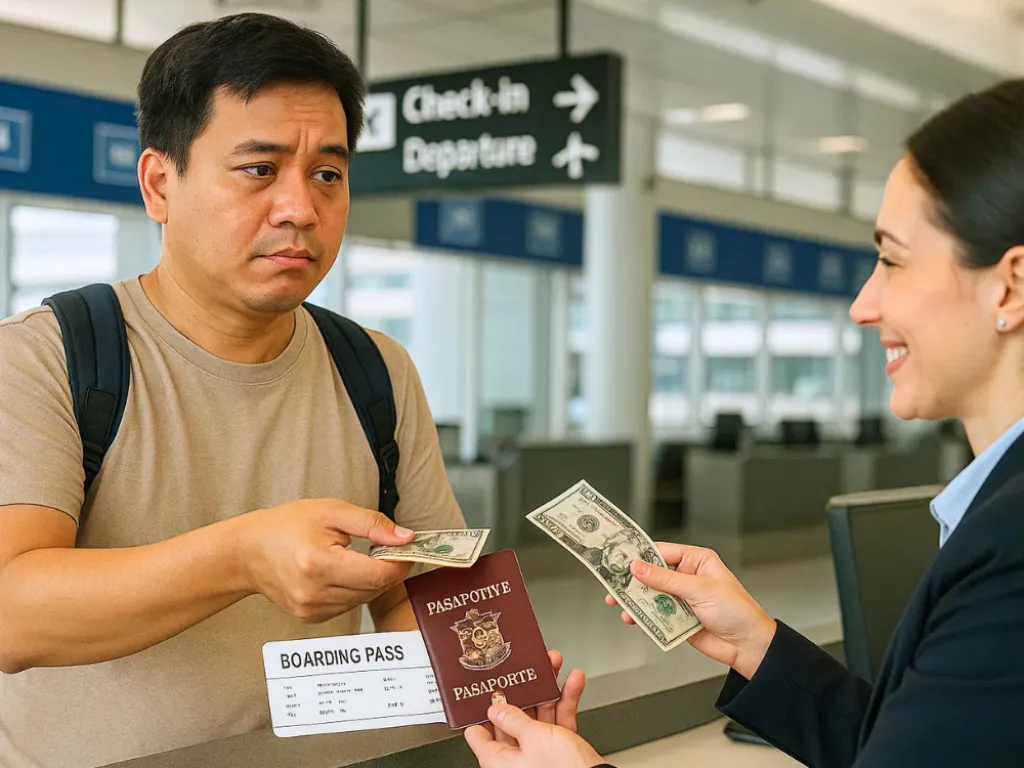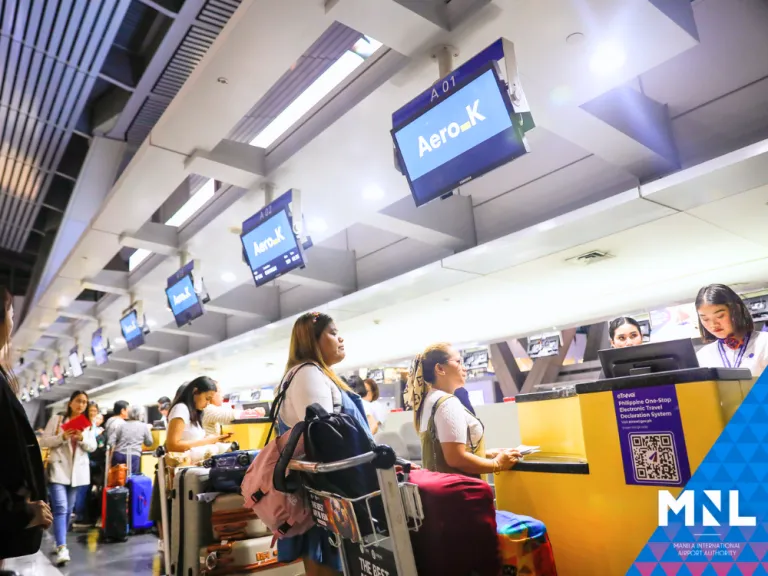Our favourite places to stay on this sleepy Cebu island.
What the Philippine Travel Tax Is and Why It Raises Eyebrows

Before you even pack your suitcase, there’s already a fee waiting for you at the airport. The Philippine Travel Tax. And here’s the kicker: it’s something only Filipinos have to pay.
The travel tax is a government-imposed fee collected from anyone flying out of the country under Presidential Decree 1183. It doesn’t matter where you booked your flight or what airline you used. That means if you’re Filipino, you pay. If you’re a foreigner travelling in the country? You’re off the hook.
So, what exactly are we paying for?
How much is the Philippine Travel Tax?
For most Filipino adults, the full travel tax is:
₱2,700 for first-class flights
₱1,620 for economy class
Kids get a small discount. Those aged two to 12 pay half the price, while infants under two are exempted. Meanwhile, children of OFWs enjoy even lower rates: ₱400 for first class and ₱300 for economy.
But for senior citizens, there’s no discount and no special treatment. They pay the same as everyone else unless they qualify for one of the reduced or exempted categories.
Who pays and who doesn’t
Here’s where it gets interesting. This tax applies to:
Filipino citizens
Permanent resident foreigners in the Philippines
Foreigners who have stayed in the country for at least a year
That means tourists visiting the Philippines don’t pay any travel tax when they leave. Yes, only locals and long-time residents do. Netizens think it’s unfair.
Why this tax still exists
The money goes to three government agencies:
50% to TIEZA (Tourism Infrastructure and Enterprise Zone Authority)
40% to CHED (Commission on Higher Education) for tourism-related programs
10% to NCCA (National Commission for Culture and the Arts)
So, technically, it funds tourism projects, education, and culture. But many Filipinos question if this 1970s-era fee still makes sense today, especially when we’re the only country in Southeast Asia that charges our own citizens this way.
Even lawmakers have tried to scrap it. In 2024, Senator Alan Peter Cayetano called the tax “outdated and discriminatory,” arguing that removing it could make travel more inclusive and boost tourism spending. But the bill to abolish it is still hanging in limbo.
How to pay
If the fee isn’t included in your ticket, you’ll need to pay it yourself:
Go to the TIEZA Online Travel Tax Payment System or
Choose your flight class and fill in your details
Pay online via card or e-wallet, or pay at the airport before check-in
You’ll get an acknowledgment receipt, print two copies, and show it to the airline counter before boarding.
You can also pay it through the eGOVph app:
Download the eGOVph app.
Log in to your account. If you don't have an account yet, create one.
After registration and logging in, click on the "Travel" option from the Home Feed.
Then, choose "TIEZA Travel Tax" from the menu.
Click "Agree" to be directed to the form to be filled out.
Fill in your details
Pay online via card or e-wallet, or pay at the airport before check-in
Also read: How to Pay TIEZA Travel Tax Online: A Step-By-Step Guide for Every Pinoy
So... what are we really paying for?

Image credit: Manila International Airport
At this point, the travel tax feels less like “supporting tourism” and more like a financial gatekeeper for Filipinos who just want to travel abroad for leisure. Other ASEAN countries encourage their citizens to explore the world. Ours charge us for it.
Maybe it’s time we ask: is this really fair?
The Philippine Travel Tax remains a must-know (and must-pay) step for every Filipino flying overseas. While it helps fund tourism and culture, many still see it as an outdated burden on local travellers. Until new reforms pass, expect to keep paying ₱1,620 every time you fly out… because for now, it’s still part of the Filipino travel experience.
Published at
About Author
Wynona Purl
Subscribe our Newsletter
Get our weekly tips and travel news!
Recommended Articles
10 Bantayan Island Resorts, Hotels, and Rentals for Your Tropical Escape 10 Best Mountain Cafes in the Philippines for Your Peak Coffee Experience Coffee date on the mountains, anyone?
10 Best Things to Do in Los Angeles Los Angeles is more than Hollywood stars. From hikes with killer views to beaches straight out of a rom-com, here are 10 must-do LA experiences for Filipino travellers or any wanderers in general!
10 Creative Hangout Spots Around Metro Manila for Artsy Souls Looking for a place to meet fellow artists and thinkers? Here are 10 collaborative spaces in Metro Manila where creatives can hang out, brainstorm, and build ideas.
10 Cutest Cafes in Japan That Are Totally One of a Kind From Pikachu snacks to Totoro cream puffs, here are 10 themed cafes in Japan that prove café hopping should be part of your travel itinerary.
Latest Articles
Manila’s New Philippine Biodome Opens: Attractions, Tickets, and What to Expect Aurora Borealis in Manila?! Yes, even small-clawed otters, parrots, scarlet ibis, and other beautiful wildlife can be seen in Manila's Philippine Biodome! Read in full to see ticket prices.
Trump to Ban Obese Immigrants and Special Needs Children from U.S. Trump soon to ban fat people and kids with special needs from entering U.S.
Google Pay Launch in the Philippines Lets Everyone Pay Securely, Filipino Travellers Benefit Most Tap to pay securely
Why Filipino Travellers Are Choosing eVisas Over Traditional Visa Applications How digital visas make travel easier
Fhukerat Offloaded in Dubai: What Travellers Must Know About UAE Entry Rules Why a Filipino vlogger was refused entry and what travellers should know before visiting Dubai.

